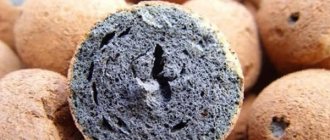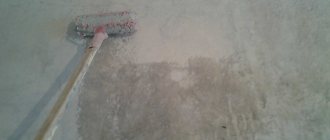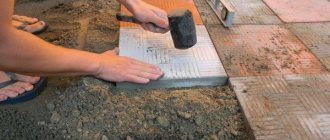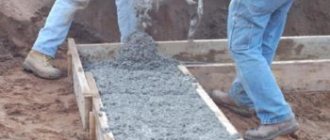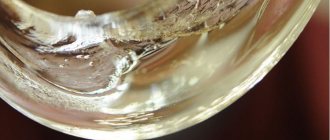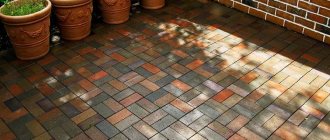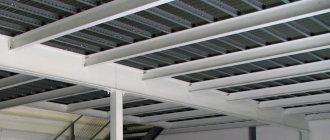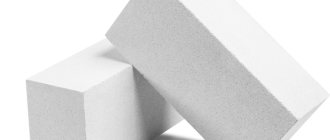The greatest protection from extraneous noise is provided by comprehensive and complete sound insulation of the room. One of the steps that many owners forget about is soundproofing the floor. Unnecessary sounds can also penetrate from neighbors below, and this event will help minimize them.
There are several ways to soundproof floors, but one of the simplest and at the same time effective is laying a dry screed with expanded clay. To perform this procedure, you can buy expanded clay of various fractions and brands.
Preparation for soundproofing the floor with expanded clay
The owner should immediately prepare for the fact that the expanded clay screed will raise the floor level by several centimeters. Therefore, first he needs to get rid of the old floor covering and the previous screed. That is, before the main work begins, the owner must be presented with a literally “bare” floor slab. You should check that there are no noticeable cracks in it. Detected defects, in turn, are filled with cement-sand mortar. A polyethylene foam tape is laid around the perimeter of the room, which will prevent noise from penetrating through the joints between the floor and walls.
Application technology
In the process of sound insulation, expanded clay can be used both as a simple backfill and as a filler for the production of lightweight concrete (with a mass of less than 2000 kg/m³).
When using expanded clay for dry screed, granules of different sizes are taken. This ensures increased strength of the finished leveling layer. Side effect: slight decrease in sound insulation performance.
In the case of a wet screed, expanded clay of the same size is used. The density of the substrate is lower, and the sound insulation performance is higher.
One of the main advantages of floor screed with expanded clay is minimizing the load on the building’s floors
Laying screed with expanded clay for sound insulation
The optimal option for creating such a screed involves the preliminary installation of logs. Their thickness should be about 80 mm. They are laid across the room in increments of 60-80 cm. To attach them, it is best to use small metal corners. When the logs are completely installed, they begin to fill in the expanded clay itself. The thickness of the resulting layer should be such that it is flush with the upper plane of the joists. It is best to use expanded clay with a medium fraction for such tasks. It fits quite tightly, levels well, but also provides fairly reliable sound insulation.
A polyethylene film is laid over the expanded clay layer, which is attached with staples to wooden joists. Polyethylene will provide waterproofing.
Preparing the floor for finishing
In principle, you can immediately lay a solid board, laminate or even parquet board on the logs. But a better option would be to pre-lay a dry screed made of chipboard or MDF. They are attached to the joists with self-tapping screws, and the remaining seams between the panels are puttied.
The resulting floor is suitable for subsequent installation of almost any finishing coating, and at the same time will reliably protect the room from the penetration of disturbing sounds from the lower apartment. This does not require a lot of effort or expense.
Sound insulation with expanded clay
Expanded clay is a lightweight, porous, environmentally friendly material that consists of hard brown balls with cells over the entire surface. It is obtained by firing low-melting clay that can swell at a temperature of 13,000 for a short period of time. As a result of this thermal shock, the clay is modified, it has a porous structure, and its granules have a sealed shell, which becomes resistant and durable to mechanical stress.
In modern construction, this material is used as a heat- and sound-insulating mixture in the form of backfill and as a filler for lightweight concrete.
Proper sound insulation reduces harmful unwanted noise, which negatively affects human health and general condition.
Soundproofing the floor with expanded clay is the best solution, also taking into account that the dead weight of such a coating will be small. The prepared composite is laid out on the existing base, thereby leveling the floor and raising it to the required height.
Next, insulating hard slabs are laid on the expanded clay layer, then geotextiles are placed on them to avoid the mortar leaking between the slabs. Insulation boards are used optionally, as they increase the cost of the structure, but also increase sound insulation.
To reinforce the subsequent mortar, a reinforcing mesh is used, after which a self-leveling mortar or cement screed is poured.
In addition to sound insulation (due to the voids between the granules, sound is absorbed), such a coating has a number of other advantages:
- improves indoor climate;
- thermal insulation (as a result - reduction in heating costs);
- fire resistance (non-combustible material);
- resistance to rotting (if moisture gets on it, it will simply evaporate without rotting or mold);
- eliminates the presence of rodents (thanks to solid granules);
- neutrality (from a construction-biological and chemical point of view, does not react with any of the building materials);
- unlimited shelf life (possibility of reuse);
- the possibility of self-installation (as a result - savings in the cost of work).
Sound insulation with expanded clay is ten times more economical than slab polymers and three times more effective than woodworking materials (arbolite). The main thing when choosing this material is to pay special attention to its quality, which is determined by volumetric weight (grade by bulk density) and strength.
Specifications
The material parameters are established by GOST 9757-90, which regulates the quality of porous building materials. Some indicators are not regulated, but still remain an important characteristic. Let's take a closer look at the main properties of expanded clay.
- Factional composition. In total, three fractions of material have been established, having a size range of 5-10 mm, 10-20 mm, 20-40 mm. A separate category includes fractions that are rarely used in construction work. These include expanded clay granules and crushed stone with sizes from 2.5 to 10 mm, as well as a wide mixed fraction from 5 to 20 mm. Thermal insulating expanded clay layers used in the form of bulk mass are a mixture of all fractions - from 5 to 40 mm. This is due to the need to fill voids in the heat-insulating layer, which increases the rigidity of the structure and eliminates convection air currents.
- Expanded clay grades by bulk density (volumetric bulk density). A total of seven values are established: up to 250 kg/m3 - grade 250, from 250 to 300 kg/m3 - grade 300, similarly - grades 350, 400, 450, 500, 600. Grades 700 and 800 are not produced for general sale and are produced only upon agreement with the consumer. True density (true volumetric weight) is 1.5-2 times greater than bulk density. This parameter characterizes the density of the material without taking into account the gaps between granules or fragments of the material;
- Expanded clay grades by strength. For gravel, there are 13 grades, differing in strength when compressed in a cylinder. For crushed stone, 11 grades are standardized, having the same designations as gravel grades. The strength of crushed stone and gravel of the same brand varies. Thus, for grade P100, the compressive strength of gravel is from 2.0 to 2.5 MPa, while crushed stone is from 1.2 to 1.6 MPa. There is a relationship between expanded clay grades in terms of density and strength - an increase in density leads to an increase in strength. The relationship between brands is also regulated by the GOST 9757-90 standard, which eliminates the production of low-quality high-density expanded clay that breaks down under light load.
- Compaction coefficient is a value agreed with the consumer, which does not exceed 1.15 and is used to take into account the compaction of the expanded clay mass as a result of transportation or caking. The use of the coefficient is associated with frequent shipment of material by bulk volume, which is convenient for the sale of large quantities.
- Thermal conductivity is the most important parameter characterizing thermal insulation properties. For expanded clay, the thermal conductivity coefficient ranges from 0.10 to 0.18 W/(m?°C). The range of values is quite narrow, which indicates the high thermal insulation properties of the material. With increasing density, the thermal conductivity coefficient increases. This is due to a decrease in the number and volume of pores containing the main heat insulator - air.
- Water absorption is an important parameter showing the behavior of a material when exposed to water. Expanded clay is a relatively resistant material and is characterized by a water absorption value of 8-20%.
- Sound insulation - like most thermal insulation components, expanded clay has increased sound insulation. The best results are achieved when soundproofing a wooden floor, in which expanded clay acts as a layer between the outer part of the floor and the interfloor slab.
- Frost resistance - due to low water absorption and clay, which is the basis of the material, expanded clay has fairly high frost-resistant properties. Numerical values are not standardized by standards, since expanded clay is frost-resistant “by default.” Only the indicators of building stones that contain expanded clay - expanded clay blocks - are standardized.
The following video will tell you how to calculate how many cubes of expanded clay in a bag:
Properties and features of the material
This material is indispensable in construction.
In order to understand why it is so good, it is necessary to consider all the positive qualities of expanded clay:
1. First of all, these are high thermal insulation characteristics. The thermal conductivity of expanded clay is equal to that of wood and brick walls. A layer of material 10 cm thick can be equated to a 25 cm board or brickwork, 80 cm thick.
2. Expanded clay is not susceptible to acids or other chemical environments. Fungus or mold does not spread on this material, which is important when pouring it into basements or attics.
3. The material is durable. Fired clay shards found by archaeologists date back thousands of years.
4. The soundproofing properties of expanded clay are used when screeding floors. Before pouring the surface, a layer of material is poured as a noise absorber.
5. Another property that allows this material to be used in construction is its high strength. When making concrete blocks, expanded clay is added to the solution. This gives strength and frost resistance to expanded clay concrete. Low moisture absorption coefficient ensures durability.
6. The main derivative of such a material is clay, so when using expanded clay there is no need to talk about the environmental component. You won't find a safer building material.
7. The material often acts as drainage due to its moisture-resistant abilities.
8. Resistance to fire has made expanded clay indispensable for insulating bathhouses and attics of private houses.
9. And one of the main attractive properties is the low price. Due to the low cost of the natural material, expanded clay is relatively inexpensive.
There is one minor drawback - the fragility of the granules, which must be kept in mind when filling surfaces during construction.
A comparison of expanded clay with other fire-resistant materials is presented here:
conclusions
So, let's summarize:
- The insulation of any room must be comprehensive in terms of factors and areas.
- Getting rid of any unwanted influences, including noise, should start from the floor.
- It is necessary to choose only high-quality materials for sound insulation.
- All calculations must be performed correctly.
- And strictly follow the instructions, including those accompanying the purchased soundproofing materials.
( 88 votes, average: 4.70 out of 5)
Leveling walls with plasterboard: technologies and main stages of the process
We combine a bathroom with our own hands
Related Posts
Optimal sound insulation for different types of base
Another important criterion that determines the type of insulation used is the type of base. I will briefly consider the features of choosing a material in accordance with the characteristics of different bases.
Wooden logs
For apartments of new construction, this is very rare, since the floors are made of concrete floor slabs, but I consider it obligatory to consider this method. There are voids between the joists that need to be filled. And it is optimal to use relatively light, but at the same time effective material. I see two optimal solutions - expanded clay and stone wool. They allow you to gain the desired thickness with minimal material costs, while simultaneously performing the functions of sound insulation and thermal insulation. A sheathing of boards is placed on top of the logs, which can be covered with plywood or OSB boards through a thin backing.
Concrete wet or semi-dry screed
Under a wet or semi-dry screed, it is necessary to lay materials that are not afraid of moisture. This is expanded clay, polystyrene foam or Soundproofing. Expanded clay can be used when the thickness of the layer is not of fundamental importance. Foam plastic and Soundproofing will help to avoid a large rise in the floor level.
How to properly soundproof the floor in an apartment under a sand-cement screed
Work on soundproofing a concrete floor in an apartment by installing a floating sand-cement screed includes the following steps:
- Removing sagging and other irregularities from the surface of the interfloor ceiling that can damage the sound-absorbing layer.
- Dust removal - use an industrial vacuum cleaner.
- Taping the walls around the perimeter of the room with damper tape. The vibration decoupler should protrude slightly above the level of the future finished floor.
- Laying a noise-absorbing layer. The slabs of mineral fiber material must be spaced evenly, without gaps, voids or deformations.
- Waterproofing is ensured by laying a polyethylene film with a thickness of 0.25 mm or more. The strips of material are laid with an overlap of 200 mm and an overlap of about 100 mm on the walls.
- Reinforcement – ensures the strength and long service life of the sand-cement screed. A polymer or metal mesh with a cell size of no more than 150x150 mm is used.
- Installation of beacons to ensure the horizontality of the formed floor. The supports for the lighthouses are made from the same sand-cement mixture that is planned to be used when pouring the screed.
- Pouring sand-cement mortar with a thickness of at least 40 mm.
- Vibration compaction of the poured mixture is necessary to remove air bubbles and ensure uniformity of the mass.
- Drying the screed – depending on the technology, can take from 3 to 7 days. At high temperatures and dry weather, the surface should be covered with film or a layer of wet sawdust to avoid drying out too quickly, which could weaken the strength of the structure.
- Pouring the self-leveling mixture, evenly distributing it over the surface using a needle roller.
- Laying the final floor covering.
- Trimming protruding parts of vibration isolation and waterproofing.
Materials used for soundproofing an apartment for installing a floating sand-cement floor screed
The following materials can be used for the sound-absorbing layer:

